When it comes to gardening, knowing the ideal plant spacing is crucial. Whether you’re a beginner or a seasoned gardener, understanding the normal spacing between plants is important for healthy growth. How do you calculate plant-to-plant distance? How do you calculate plant population with spacing? What is the best spacing for vegetable gardens? The answers to these questions are essential for effective gardening.
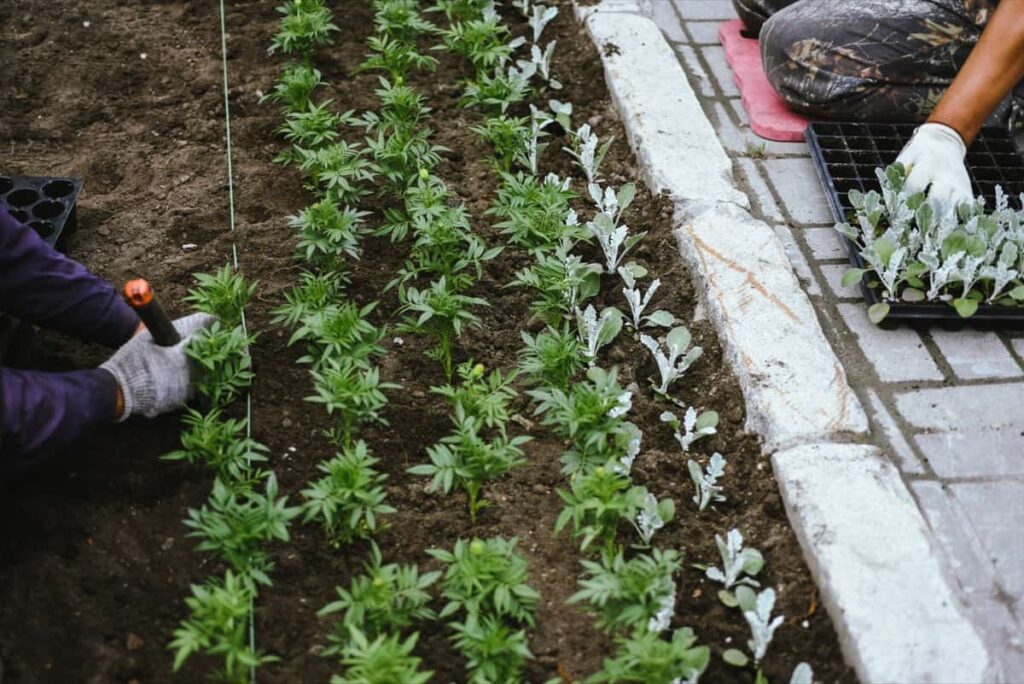
Using a plant spacing calculator or following a plant spacing guide can optimize your garden’s yield and beauty. This article will act as a comprehensive vegetable plant spacing calculator and cover fruits, flowers, and herbs. We’ll also discuss the distance between plants per row and the triangular plant spacing formula.
Why is Space Important for Plants?
Space is vital for plants for multiple reasons. Proper spacing allows ample sunlight to reach the leaves, which helps in photosynthesis. Additionally, adequate room helps in proper air circulation, reducing the risk of diseases like mold and fungi. Roots also require space to spread and gather nutrients and water from the soil. Incorrect spacing can lead to overcrowding, poor air circulation, and competition for resources, significantly affecting your produce’s quality and yield.
Optimal Plant Spacing for Vegetables
For vegetables, optimal spacing varies from one type to another. You can plant leafy greens like lettuce and spinach closer, usually about 6 to 8 inches apart. Root vegetables like carrots and radishes need more space, usually between 2 to 4 inches. For bigger plants like tomatoes and cucumbers, a distance of at least 24 to 36 inches between plants per row is ideal. The best spacing for vegetable gardens depends on multiple factors, such as the variety of vegetables, soil quality, and climatic conditions. Many gardeners rely on a vegetable plant spacing calculator to ensure they are using the ideal measurements.
Fruit Tree Spacing
Fruit trees require much more space than vegetables and flowers because they have expansive root systems and can grow quite tall. Apple trees, for instance, should be spaced about 10 to 15 feet apart, while peach trees require about 15 to 20 feet. Berry bushes like raspberries and blackberries need a distance of about 4 to 6 feet between each plant. It’s always good to research the specific needs of each type of fruit tree you are planning to plant. Utilizing a plant spacing calculator designed for fruit trees can be highly beneficial.
In case you missed it: Vegetable Planting Chart for London: Month-Wise Growing Calendar for Different Seasons
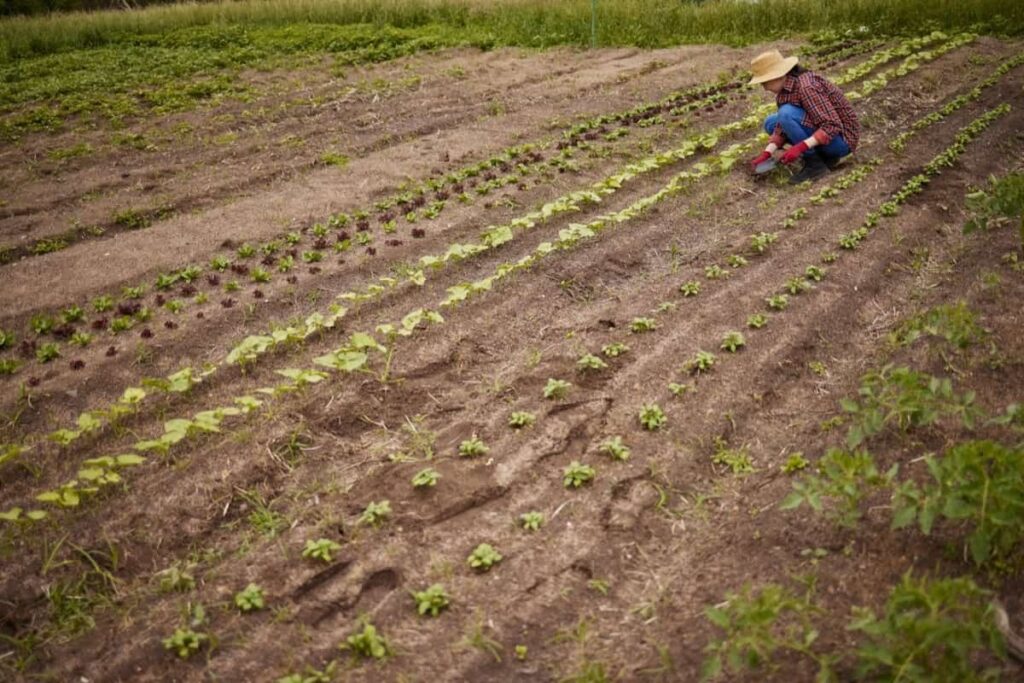
Flower Plants Spacing
Flower spacing also varies widely depending on the type of flower and its growth habit. For instance, petunias can be spaced about 1 foot apart, while larger flowers like sunflowers require at least 2 to 3 feet of space between each plant. The key here is also to consider the mature size of the flower, not just its size when you plant it. A general plant spacing guide tailored for flowers can assist you in making the right choices for your garden’s design and health.
Herb Plant Spacing
Herbs are generally more flexible when it comes to spacing. Herbs like basil, parsley, and mint usually do best when they are planted 18 to 24 inches apart. Others, like rosemary and thyme, require more room and should be about 2 to 3 feet apart. While herbs are generally forgiving, giving them enough space to flourish is still crucial. Remember that some herbs can become invasive if not properly managed, so understanding their spacing requirements is crucial.
Calculating Ideal Plant Spacing
Calculating the ideal distance between your plants is an essential aspect of gardening that shouldn’t be overlooked. The first step usually involves understanding the specific needs of the plants you are growing, which can usually be found on seed packets or from trusted online sources. A plant spacing calculator can be a helpful tool for this, especially for those new to gardening or working with many plants.
Often, these calculators use a triangular plant spacing formula, which allows for optimal use of garden space. Furthermore, you can calculate plant population with spacing to get an idea of how many plants your garden can comfortably hold, thus aiding you in efficient garden planning and potentially maximizing your yield.
Considering Plant Spacing When Designing a Garden
When you are in the design phase of your garden, plant spacing is a critical factor that influences aesthetics and functionality. It’s more than just calculating plant-to-plant distance; it’s about understanding how each plant will grow and interact with its neighbors. Having a well-thought-out plant spacing guide can make the task significantly easier.
Additionally, considering the best spacing for vegetable gardens, or any other type of garden, is crucial in ensuring that your plants have the room they need to thrive. Correct spacing impacts not just individual plants but your garden’s overall layout and yield.
In case you missed it: Month-By-Month Tree Pruning Chart: Zone-wise Trimming Calendar for Different Seasons
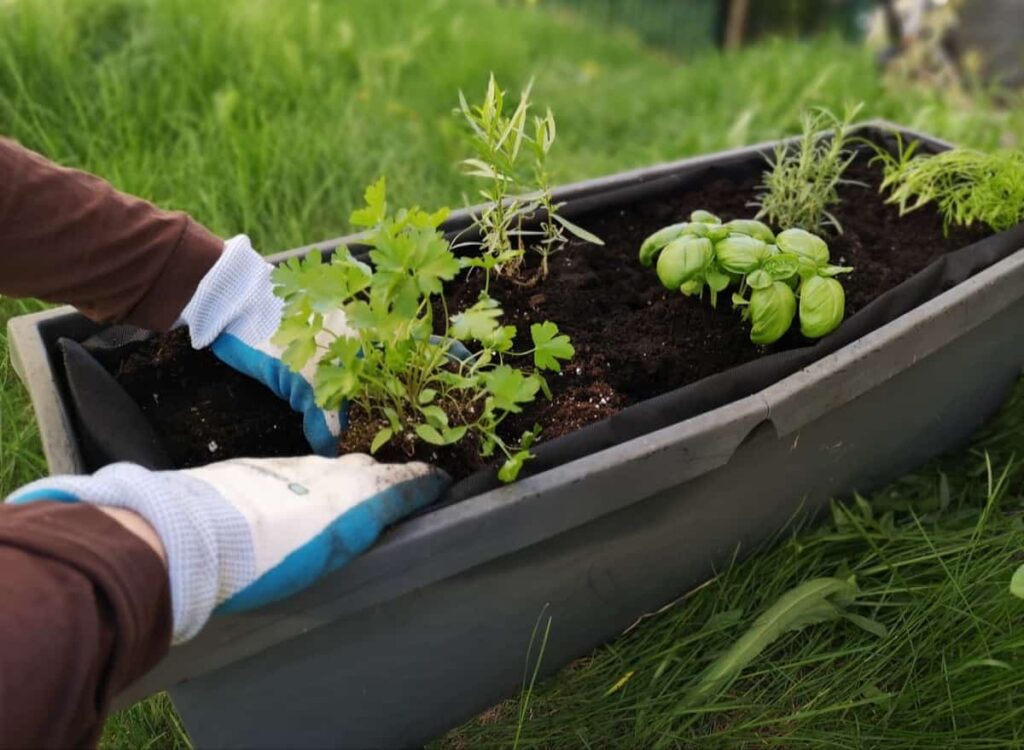
How Root Systems Affect Plant Spacing
The underground world of root systems is often out of sight but should never be out of mind when considering plant spacing. Different plants have different root systems—some are shallow and wide-spreading, while others go deep into the soil. Knowing the root behavior of your chosen plants helps determine the normal spacing between plants. For example, plants with expansive root systems need more space to prevent competition for nutrients and water. Failing to account for root systems in your plant spacing guide can lead to stunted growth and poor yields.
Row Spacing vs. Plant Spacing: What’s the Difference?
While the terms may sound similar, row spacing and plant spacing serve different purposes and should both be considered in garden planning. Plant spacing refers to the distance between individual plants within a row and is critical for the plant’s growth, health, and yield. Row spacing, on the other hand, is the distance between the rows themselves.
It often depends on the gardening tools you use, like hoes or tillers, and it affects how easily you can navigate between rows for tasks like weeding, watering, and harvesting. Both are crucial for optimizing a garden’s layout, and a plant spacing calculator that incorporates row spacing can be a helpful tool for gardeners.
Plant Spacing Chart for Different Climates
| Plant Type | Tropical Climate Spacing (CM) | Tropical Climate Spacing (Inches) | Temperate Climate Spacing (CM) | Temperate Climate Spacing (Inches) | Arid Climate Spacing (CM) | Arid Climate Spacing (Inches) |
| Tomato | 60 – 90 | 24 – 36 | 60 – 90 | 24 – 36 | 70 – 100 | 28 – 40 |
| Lettuce | 15 – 20 | 6 – 8 | 15 – 20 | 6 – 8 | 18 – 22 | 7 – 9 |
| Carrot | 5 – 10 | 2 – 4 | 5 – 10 | 2 – 4 | 6 – 11 | 2.5 – 4.5 |
| Sunflower | 60 – 90 | 24 – 36 | 45 – 60 | 18 – 24 | 60 – 90 | 24 – 36 |
| Basil | 45 – 60 | 18 – 24 | 45 – 60 | 18 – 24 | 50 – 65 | 20 – 26 |
| Apple Tree | 300 – 450 | 120 – 180 | 300 – 450 | 120 – 180 | 350 – 500 | 140 – 200 |
| Rosemary | 60 – 90 | 24 – 36 | 60 – 90 | 24 – 36 | 65 – 95 | 26 – 38 |
| Petunia | 25 – 30 | 10 – 12 | 25 – 30 | 10 – 12 | 28 – 33 | 11 – 13 |
| Raspberry Bush | 120 – 180 | 48 – 72 | 120 – 180 | 48 – 72 | 130 – 200 | 52 – 80 |
| Mint | 45 – 60 | 18 – 24 | 45 – 60 | 18 – 24 | 50 – 65 | 20 – 26 |
In case you missed it: Vegetable Container Size Chart in Inches, Cm, and Gallons: Cost Comparison for Different Container Sizes
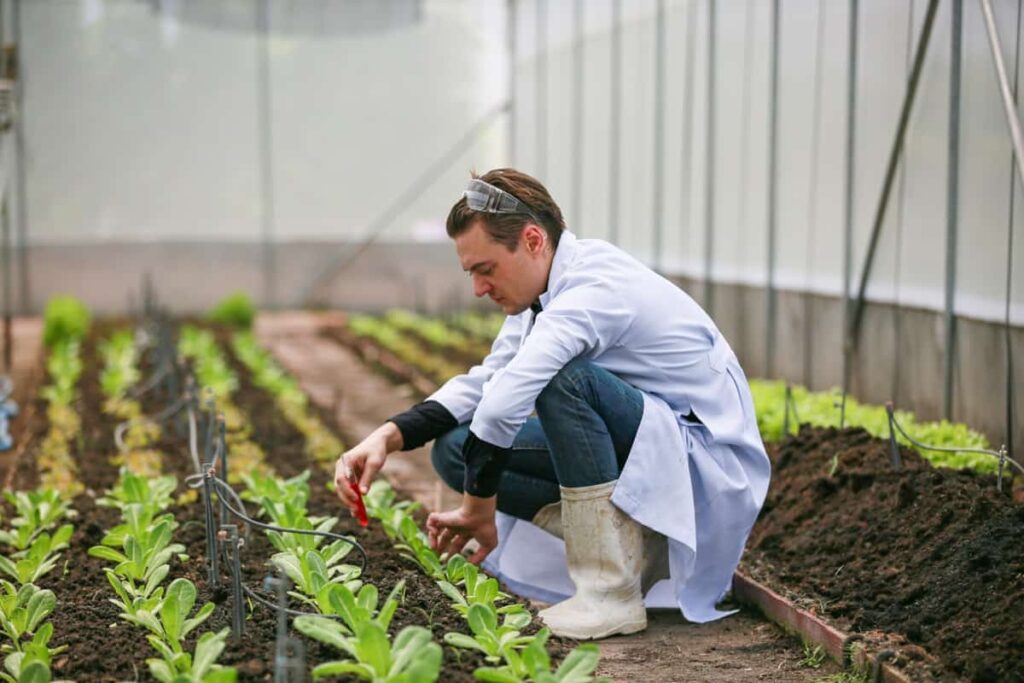
Plant Spacing Chart for Different Soils
| Plant Type | Sandy Soil Spacing (CM) | Sandy Soil Spacing (Inches) | Loamy Soil Spacing (CM) | Loamy Soil Spacing (Inches) | Clay Soil Spacing (CM) | Clay Soil Spacing (Inches) |
| Tomato | 60 – 80 | 24 – 32 | 60 – 90 | 24 – 36 | 70 – 100 | 28 – 40 |
| Lettuce | 12 – 18 | 5 – 7 | 15 – 20 | 6 – 8 | 18 – 22 | 7 – 9 |
| Carrot | 4 – 8 | 1.5 – 3 | 5 – 10 | 2 – 4 | 6 – 12 | 2.5 – 5 |
| Sunflower | 50 – 75 | 20 – 30 | 45 – 60 | 18 – 24 | 60 – 90 | 24 – 36 |
| Basil | 40 – 55 | 16 – 22 | 45 – 60 | 18 – 24 | 50 – 65 | 20 – 26 |
| Apple Tree | 275 – 400 | 110 – 160 | 300 – 450 | 120 – 180 | 350 – 500 | 140 – 200 |
| Rosemary | 55 – 80 | 22 – 32 | 60 – 90 | 24 – 36 | 65 – 95 | 26 – 38 |
| Petunia | 20 – 28 | 8 – 11 | 25 – 30 | 10 – 12 | 28 – 33 | 11 – 13 |
| Raspberry Bush | 110 – 160 | 44 – 64 | 120 – 180 | 48 – 72 | 130 – 200 | 52 – 80 |
| Mint | 40 – 55 | 16 – 22 | 45 – 60 | 18 – 24 | 50 – 65 | 20 – 26 |
Plant Spacing Chart for Different Vegetables
| Vegetable | Recommended Spacing (CM) | Recommended Spacing (Inches) |
| Tomato | 60 – 90 | 24 – 36 |
| Lettuce | 15 – 20 | 6 – 8 |
| Carrot | 5 – 10 | 2 – 4 |
| Cucumber | 45 – 60 | 18 – 24 |
| Zucchini | 60 – 90 | 24 – 36 |
| Bell Pepper | 45 – 60 | 18 – 24 |
| Spinach | 7 – 12 | 3 – 5 |
| Onion | 10 – 15 | 4 – 6 |
| Garlic | 10 – 15 | 4 – 6 |
| Green Beans | 5 – 10 | 2 – 4 |
| Radish | 5 – 10 | 2 – 4 |
| Potato | 30 – 45 | 12 – 18 |
| Sweet Corn | 23 – 30 | 9 – 12 |
| Cauliflower | 45 – 60 | 18 – 24 |
| Broccoli | 45 – 60 | 18 – 24 |
| Asparagus | 30 – 45 | 12 – 18 |
In case you missed it: Vegetable Planting Chart for Melbourne: Month-wise Growing Calendar for Different Seasons
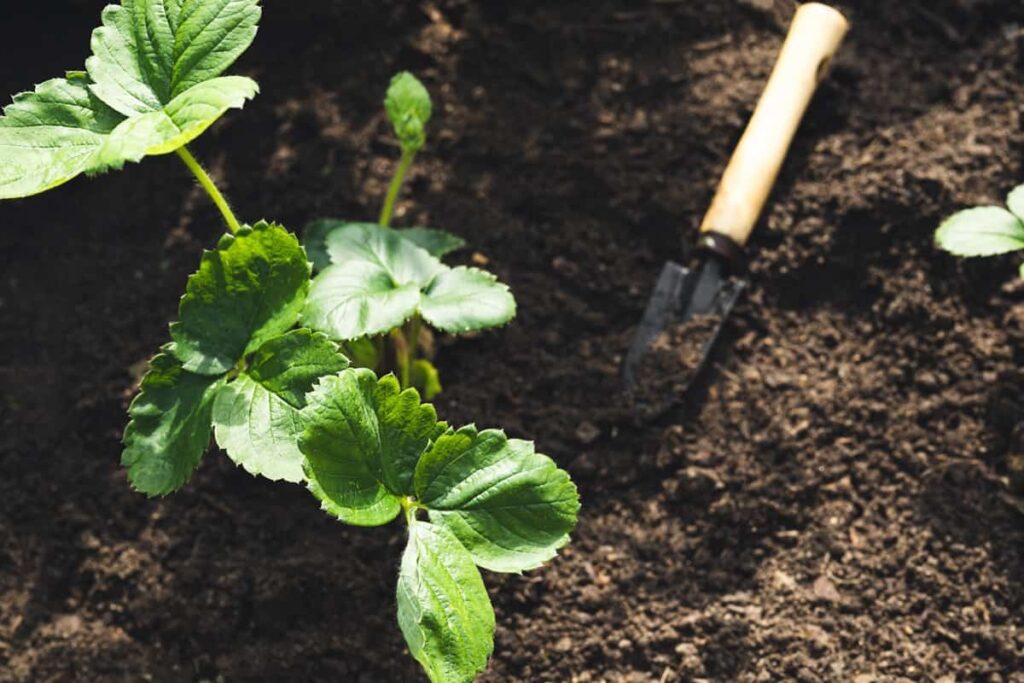
Plant Spacing Chart for Different Fruits
| Fruit Type | Recommended Spacing (CM) | Recommended Spacing (Inches) |
| Apple Tree | 300 – 450 | 120 – 180 |
| Peach Tree | 450 – 600 | 180 – 240 |
| Cherry Tree | 300 – 450 | 120 – 180 |
| Lemon Tree | 250 – 400 | 100 – 160 |
| Orange Tree | 300 – 450 | 120 – 180 |
| Raspberry Bush | 120 – 180 | 48 – 72 |
| Blueberry Bush | 150 – 180 | 60 – 72 |
| Strawberry | 30 – 40 | 12 – 16 |
| Grape Vine | 180 – 240 | 72 – 96 |
| Blackberry Bush | 120 – 180 | 48 – 72 |
| Pear Tree | 350 – 500 | 140 – 200 |
| Plum Tree | 350 – 500 | 140 – 200 |
| Fig Tree | 300 – 450 | 120 – 180 |
| Pomegranate Tree | 300 – 400 | 120 – 160 |
| Mango Tree | 800 – 1000 | 320 – 400 |
Plant Spacing Chart for Different Flowers
| Flower Type | Recommended Spacing (CM) | Recommended Spacing (Inches) |
| Sunflower | 60 – 90 | 24 – 36 |
| Petunia | 25 – 30 | 10 – 12 |
| Rose | 60 – 90 | 24 – 36 |
| Marigold | 20 – 25 | 8 – 10 |
| Tulip | 12 – 15 | 5 – 6 |
| Daffodil | 15 – 20 | 6 – 8 |
| Lavender | 60 – 90 | 24 – 36 |
| Hydrangea | 90 – 150 | 36 – 60 |
| Orchid | 25 – 40 | 10 – 16 |
| Lily | 20 – 30 | 8 – 12 |
| Chrysanthemum | 25 – 35 | 10 – 14 |
| Daisy | 30 – 40 | 12 – 16 |
| Geranium | 25 – 30 | 10 – 12 |
| Pansy | 15 – 20 | 6 – 8 |
| Begonia | 15 – 20 | 6 – 8 |
Plant Spacing Chart for Different Herbs (Table) need in CM and Inches
| Herb Type | Recommended Spacing (CM) | Recommended Spacing (Inches) |
| Basil | 45 – 60 | 18 – 24 |
| Parsley | 20 – 30 | 8 – 12 |
| Mint | 45 – 60 | 18 – 24 |
| Rosemary | 60 – 90 | 24 – 36 |
| Thyme | 20 – 30 | 8 – 12 |
| Oregano | 30 – 45 | 12 – 18 |
| Cilantro | 15 – 20 | 6 – 8 |
| Dill | 20 – 30 | 8 – 12 |
| Lavender | 60 – 90 | 24 – 36 |
| Sage | 60 – 75 | 24 – 30 |
| Tarragon | 45 – 60 | 18 – 24 |
| Chives | 20 – 30 | 8 – 12 |
| Lemon Balm | 45 – 60 | 18 – 24 |
| Peppermint | 45 – 60 | 18 – 24 |
| Fennel | 30 – 45 | 12 – 18 |
In case you missed it: When to Start Seeds Indoors Chart: Zone Wise Calendar for Vegetables and Flowers
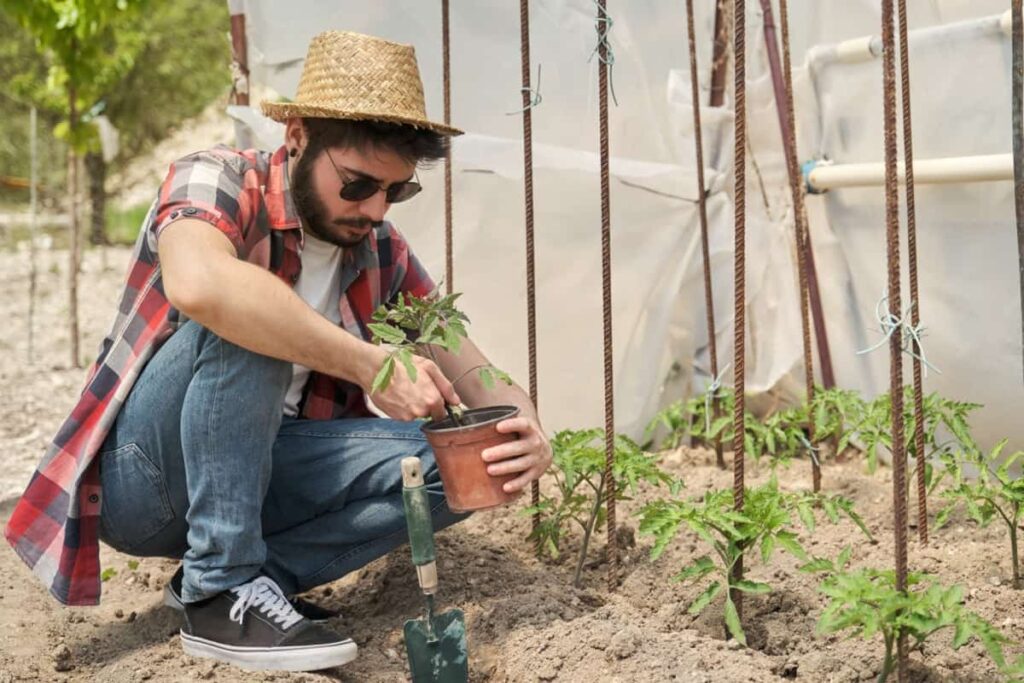
Conclusion
Understanding the intricacies of plant spacing is crucial for a successful garden, whether you’re growing vegetables, fruits, flowers, or herbs. Does space affect plant growth? It impacts everything from sunlight absorption to water and nutrient uptake. Utilizing a plant spacing formula or a plant spacing calculator can greatly assist in getting these measurements right.
It’s vital to know how much space vegetables need to grow and the space requirements for fruits, flowers, and herbs. The normal spacing between plants can differ significantly depending on what you’re growing and getting it wrong can hinder plant health and reduce yields. In essence, whether you’re a beginner or an experienced gardener, understanding the specific spacing needs of your plants is key to a thriving garden.
- Profitable Village Farming Business Ideas in 2024
- High-Yield Aquaculture: Fast-Growing Fish for Farming
- Effective Fish Pond Construction Techniques for Beginners
- Irrigation and Water Management in Pineapple Farming
- Blossom to Harvest: Mastering Flowering and Pollination in Papaya Farming
- Pig Fattening Essentials: From Selection to Sale for Beginners
- Raising Wagyu Cattle: A Complete Guide for Premium Beef Production
- Soil Types and Their Water Holding Capacity
- Optimizing Irrigation Schedules for Coconut Groves for Enhanced Yield
- Espresso Your Garden: Coffee Grounds for Healthier Acid-Loving Plants
- The Best Soil Mix for Snake Plants: How to Mix Your Own Snake Plant Soil
- Green Thumb Success: Expert Tips for Cultivating Greenhouse Beans All Year Round
- Bloom All Year Round: The Ultimate Guide to Indoor Hyacinth Care
- Eco-Friendly Gardening: How to Make Liquid Fertilizer from Kitchen Waste
- Ultimate Guide to Grow Anise in Pots: Explore Seed Propagation to Harvesting
- Guide to Raising Chester White Pigs: Discover Breed Facts to Growth Management
- Mastering the Elegance: The Ultimate Guide to Weeping Cherry Tree Care, Planting, and Maintenance
- Ultimate Guide to Planting Garlic in Grow Bags: Growing Strategies for Beginners
- How to Fix Spider Plant Leaf-Related Problems: Natural and Organic Remedies
- 10 Reasons Why Your Tulsi Plant is Shedding Leaves: Home Remedies and Solutions
- Optimizing Growth and Yield: The Advantages of Palm Bunch Ash Fertilizer
- Utilizing Neem Oil Extract as a Natural Pesticide for Hydrangea
- From Soil to Harvest: Various Ways in Which Farmers Can Use AI Tools
- Steps to Encourage and Induce Citrus Flowers: A Comprehensive Guide
- How to Fix Snake Plant Leaf-Related Issues: Natural and Organic Remedies
- Transform Your Garden into a Fragrant Oasis with Raat Ki Rani (Night Blooming Jasmine)
- Discover the Ideal Chicken Breeds for Philippine Farms
- How to Create a Poultry Egg Farm Business Plan for Profits
- Grow Lemon Cucumbers Like a Pro: Insider Techniques for Bountiful Yields
- Ultimate Guide to Caring for Your Pink Princess Philodendron: Tips for Thriving Variegation
- Areca Nut Profit Per Acre: Calculating Yield and Cost of Cultivation
- How Kaveri Chicken is Becoming a More Profitable Breed in Indian Backyards
- Transform Your Barn: 9 Steps to Convert a Horse Stall into a Chicken Coop
- Exploring Suffolk Sheep Disadvantages with Limitations and Challenges
- Guide to Solving Potted Lemon Tree Problems: How to Revive Lemon Tree in Containers
- Steps to Encourage Female Pumpkin Flowers: Best Strategies for More Flowers and High Yields
